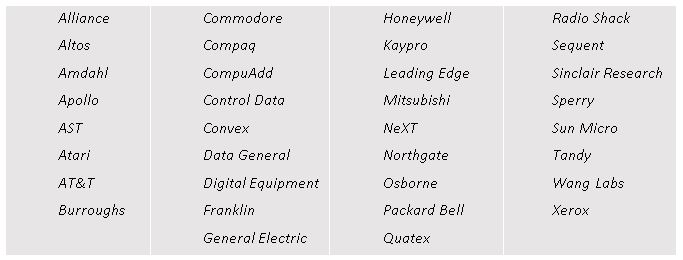
By: Harvey Bergholz
Do you know what these four companies have in common?
- US Air
- Dexter Shoes
- The Buffalo News
- World Book Encyclopedia
Together, over a decade’s time, they generated billions of dollars’ worth of investment losses for the “Oracle of Omaha,” Warren Buffett. There’s no infallibility among us humans, and while the Oracle has come closer than most, he freely and happily describes his mistakes – or learning opportunities – and these four were among them. The lesson was a simple one with the benefit of hindsight, but it has profound implications for executive decision-making. Buffett himself described it in his typically succinct style:
“In terms of long-term financial results, the pond you jump into is ten times as important as how well you swim … because when a manager with a reputation for brilliance meets an industry with a reputation for lousy economics, the reputation of the industry will survive.”
The headwinds confronting companies stuck in lousy industries or market segments will overcome even outsized management talent. The exception is when a company finds a way to reinvent the basic business model of that industry. This is what Southwest did in the airline industry, what Nucor did with mini-mills in the steel industry, and what Amazon is doing now in the retail industry.
Be on the Lookout for Winds of Change
When the “winds” switch – in secular terms, not just a temporary cyclical event – it’s an executive’s responsibility to navigate the storm by shifting resources to a more positive place in the business portfolio. De-emphasize or exit one space and emphasize or enter another. Of course, that assumes your organization has a portfolio of businesses, products, or services to do that; and that it has the resources to enable such flexibility. Look at what happens when organizations don’t. Do you recall these names? All riding high and making big profits when the tailwinds were strong in the ‘80s and early ‘90s for the computer industry. And then, it all changed …

From studies by the Strategic Planning Institute:
“Some businesses are very profitable or have exceptional cash flows; others are unprofitable or have bad cash flows …
The laws of the marketplace account for 80% of the variance …
The characteristics of the served market (i.e. the competitors, customers, and suppliers) constitute about 80% of the reasons for success or failure …. And the operating skill or lack of management is the other 20%”
Even the best swimmers won’t overcome the scummy ponds – unless they can reinvent the business model.
Make-or-Break Decisions
The point of this brief history into ponds and swimmers and reinvented business models? A simple three-decision construct to remind you, the now or future executive, that the game of business comes down to these make-or-break decisions, which should be reviewed as a regular management team agenda item – not as a once yearly event:
- Where to Play: Which markets and customer segments to be in, which to avoid, and which products and services to offer
- How to Play: Which strategies to adopt and implement to accomplish the goals that fall naturally out of number one
- How to Execute: Making the right allocation of resources (expertise, dolLars, technology, facilities, headcount) to enable effective strategy execution. Feed the successful strategies and healthy “ponds” and exit, or at least put on a diet, the others
About the Instructor: Harvey Bergholz

Harvey has experience as president of Jeslen Corp., a management consulting firm. Jeslen Corp. consults across industries and organization sizes, focusing on strategic planning, organization development, facilitation, and performance management. Working mostly with senior management and boards, Harvey and his team design and deliver tailored approaches to problem-solving and decision-making situations in organizations large and small, public and private.